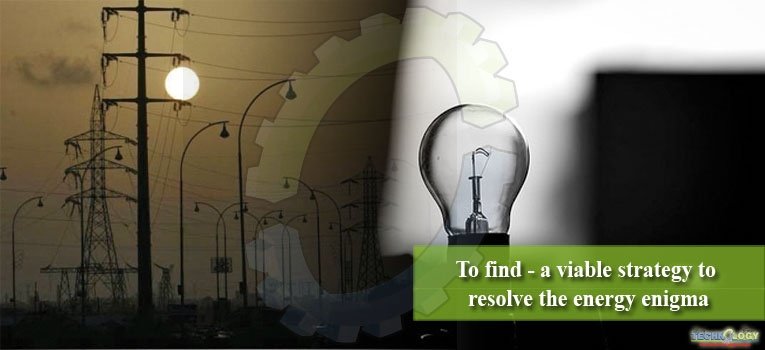Severity of the issue: Google responds with more than 9.8 million answers in 0.41 seconds when asked about the strategy to resolve Pakistan’s energy enigma. Undoubtedly, the issue bears significance as there are realities that connive of an energy-starved future.

More than 20% of population is not connected to grid. An energy shortage of 5-7 GW costs the country 4% of its GDP. Per capita energy consumption is already 6 times lower (449 kWh) than the world’s average (2,782 kWh). Consequently, meeting the energy needs and assuring developmental ambitions is a hard nut to crack.
Under-exploited resource potential
And, there is silver lining. The country enjoys ample energy resource potential in hydro-electric (60 GW), coal (185 billion tons), wind (60 GW) and solar (50,000 MW) energies. Forbes quotes Pakistan as Saudi Arabia of hydropower and coal. The conundrum – blessed naturally, yet poor on ground – needs drastic remedial measures.
A viable energy strategy – the need of hour
As stated in the article Pakistan’s energy crises – in search of a policy combo the root cause behind energy crisis is the lack of long-term strategic vision. Notwithstanding, the future also stipulates exigency in coping the evils of poverty, corruption, outstanding debts and illiteracy etc. For instance, about 22.6 million children are still out of school, corruption costs the poor economy about US$133 million daily and about 18% of the population is undernourished.
Global character of the energy strategy
According to Ashdown’s third law of global power shift, in contemporary world, ‘everything is connected to everything’ and Thomas L Friedman is of the opinion that ‘local is over’. So, there is no evasion from the international obligations such UN’s Sustainable Development Goals, Paris Accord and Sustainable Energy for All etc.
Energy strategy must conform to national as well as international energy and sustainability ambitions. Meditating to devise a strategic vision must be followed by contemporary methodologies such as Situation-Target-Path (STP) analysis and Quantitative Strategic Planning Matrix (QSPM) etc.
Regional edge
In addition to the existing energy policies and trans-border energy projects, Pakistan should use the regional political leverages to mitigate the energy crises i.e., Shanghai Cooperation Organization (SCO), for exploring options to trade oil and gas with Central Asian Republics (CAR) and Russia;
South Asian Association for Regional Cooperation (SAARC), for consulting India’s oil refining capabilities and forming a Nepal-Bhutan axis of hydropower; and China Pakistan Energy Corridor (CPEC), for participating in the game-changing ‘ecological civilization’ (Xi Jinping’s brainchild).
Government-intensive approach
The government in Pakistan rests on three pillars i.e. legislature, judiciary and executive, with all three obeying the single bible – 1973 constitution. The constitution has articles about education and health, but it lacks incorporation of energy sustainability and eco-friendliness – future’s mantra for survival.
To truly mend the national DNA with energy-promising endeavors in an automatic way, the constitution must be fed with energy-friendly laws. Any strategy, whether proposed or under-progress, must follow Regulatory Impact Assessments (RIA) and must aim at achieving strides in the World Bank’s Regulatory Indicators for Sustainable Energy (RISE), seek lessons from the model adopted by Germany (energiewende) and, above all, promote a sense of answerability to the future generations.